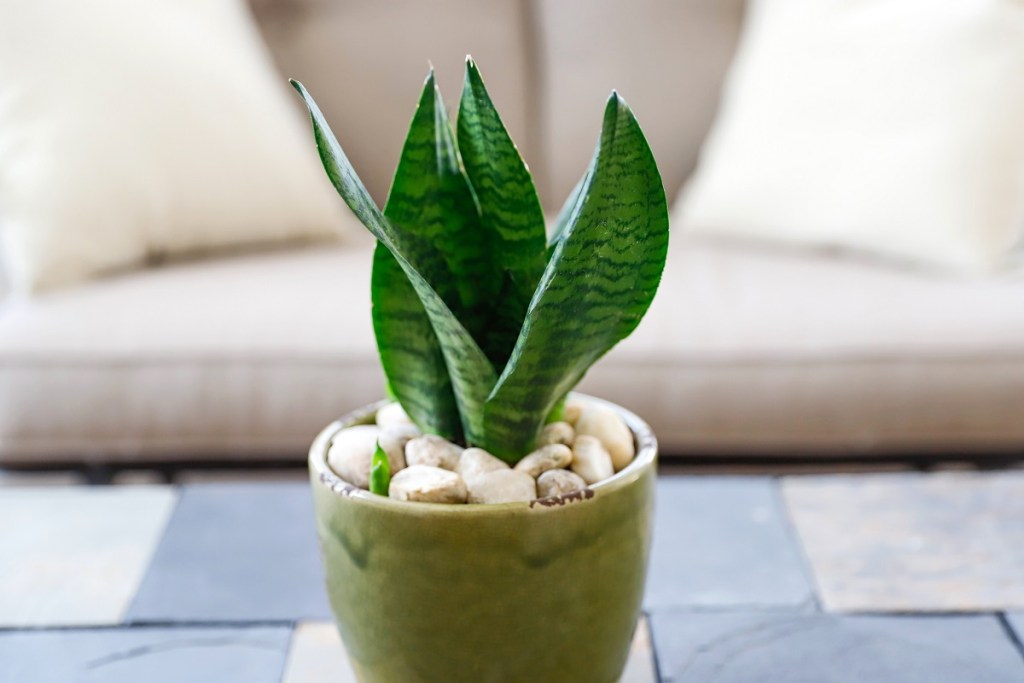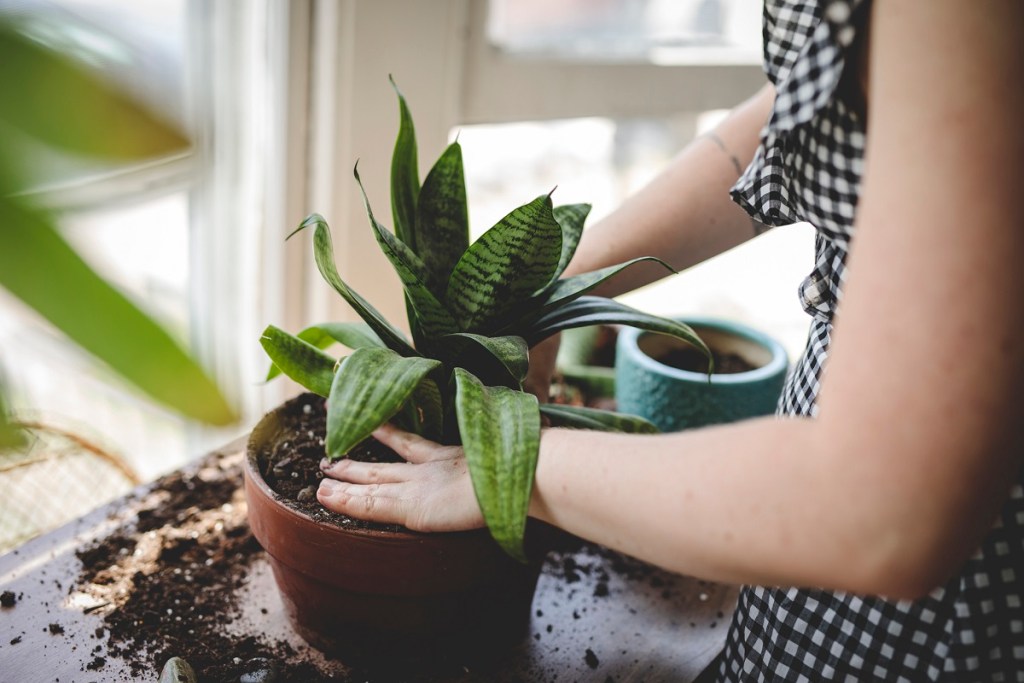Snake plants, also known as “mother-in-law tongue,” are among one of the most popular houseplants for both beginner and expert gardeners. Native to West Africa, these tropical succulents are well-suited for indoor environments, so long as you can meet the needs of the plant. They can even be easily propagated; once you have one, you may just find yourself with a whole collection.

Plant background
Did you know snake plants weren’t always considered a member of the Dracaena species? They were actually classified as Sansevieria plants until 2017. There were too many similarities, though, between the snake plant varieties and other members of the Dracaena species, so much so that the plants were re-classified.
Snake plants, across all varieties, feature some type of sword-shaped leaves that can grow up to eight feet tall depending on which kind you have. Typically the leaves have green bands and yellow borders, but some varieties have white stripes as well–and not every snake plant sticks straight up! The most iconic one that comes to mind when people talk about snake plants are the ones where the leaves are stiff, growing directly up toward the sky. However, as with any plant, the different varieties each have a unique quality. And all of them are toxic to both cats and dogs.
Different varieties of snake plants
There are six different popular varieties of snake plants you can grow in your home. Each of them have similar care requirements, so you won’t have to worry about memorizing specific needs for each variety. Snake plants overall are quite hardy (and often regarded as indestructible).
- The Dracaena angolensi. One of the bigger varieties, reaching several feet at maturity. Leaves start at a crown and arch out as they grow.
- The Dracaena desertii. A medium-height variety, growing to about 12 inches. Also known as rhino grass. Leaves are tinted red.
- The Dracaena trifasciata “Bantel’s Sensation.” A larger variety, growing to about three feet tall at maturity. Leaves are narrow with white stripes.
- The Dracaena trifasciata “Hahnii.” A smaller variety, growing to only six inches tall. Also known as the bird’s nest variety because the leaves cluster in a nest-like appearance.
- The Dracaena trifasciata “Laurentii.” A variegated variety with yellow edges on the leaves. Often the snake plant variety that’s thought of first.
- The Dracaena trifasciata “Twist.” A medium-height variety, growing up to about 14 inches tall. Leaves twist as they grow and have horizontal stripes and yellow edges.

Caring for your snake plant
Since snake plants are commonly known as an easy-to-grow, difficult-to-kill plant, it makes sense that their care is relatively simple. They’re ideal indoor container plants, perfect as a floor plant or an accent on a side table. Each variety brings a unique look to your space, but you can’t go wrong with any of them!
The one thing to keep in mind is that since snake plants are natively tropical, they thrive in warm weather. Keep them away from drafts or windows in the colder months. They’re also drought-resistant, but are sensitive to overwatering, which can rot the roots and ultimately kill the plants. It’s always best to pot indoor plants in a container that has good drainage, that way excess water has a place to go and doesn’t sit in the bottom of the dirt.
Light needs: Indirect, consistent light
Soil needs: Loose, well-draining potting soil
Water needs: Let soil dry between waterings; if unsure, underwatering is better than overwatering
The best way to prune your snake plant
Believe it or not, it’s important to prune your indoor plants! Whether it’s trimming off dead or diseased leaves, or simply thinning out an overcrowded plant, pruning is an essential part of indoor plant care. For snake plants, the best time to give them a trim is during the growing season (spring/summer) when the plant is healthiest to help minimize stress. Snake plant leaves should be removed at the soil line using sterile pruning shears (or other sharp tools). If you’re interested in maintaining a specific height for your plant, you can choose to remove some of the tallest leaves.
Remember that taking too much of a plant at one time can cause adverse effects, so be mindful of how much you’re trimming off.
Benefits of growing snake plants
Other than adding to the aesthetic of your home, snake plants come with a couple added health benefits. They’re one of a selection of houseplants that can help filter the air in their environment (even at night!), changing small amounts of CO2 into oxygen. They also help improve the quality of your air by removing toxic pollutants like benzene, formaldehyde, trichloroethylene, and xylene.
Many gardeners will choose to grow a houseplant collection based on which plants can remove toxins and filter air to get the ultimate benefit from their plants. Not every houseplant can filter toxic pollutants in your home, so if this is something you’re interested in, you can read more here! Otherwise, snake plants make gorgeous accents for any home and any style, and you can mix and match varieties with ease.
Editors' Recommendations
- How to propagate fiddle-leaf fig plants: A step-by-step guide
- How to care for philodendrons, a decorative indoor plant
- Jade plant care: A complete grower’s guide
- Elephant ear plant care guide: What you need to know
- Now that it’s more common, here’s how to care for your sought-after Thai Constellation Monstera


